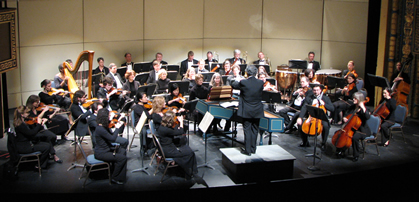Carolina Performing Arts continued its international dance series in UNC-CH’s Memorial Hall with an interesting collaboration between an American and an African troupe. In its 24 years, the Brooklyn-based Urban Bush Women group has grown from being a ferocious, politicized, community-building dance company you saw in tiny venues like the Durham Arts Council, into a ferocious, politicized, transnational-community-building dance company performing to large crowds around the world. UBW’s particular concern is the “telling” of stories long left untold — those of African-American life, especially women’s lives, and more broadly, those of the African Diaspora. In 2004, the seven Urban Bush Women and their artistic director Zawole Willa Jo Zollar began to work with their Senegalese counterparts in the all-male Compagnie Jant-Bi, whose artistic director is Germaine Acogny. Over several residencies on both continents, the two choreographers, together with the dancers, created Les écailles de la mémoire (The Scales of Memory), an exploration of shared culture and history.
These are not scales in the sense of a device for weighing, but in the sense of flakes or fragments. I think there is a dual meaning — les écailles are also fish scales, or the shells of creatures like oysters. Perhaps “les écailles de la mémoire” protect and define the soft flesh of a culture over centuries and oceans, until the Door of No Return turns inside out and becomes a door to reconnection. Thirteen percent of the enslaved people transported from Africa to North America came from the Senegambia region, and many of those would have been taken first to the island of Goree, just off the coast, and they would have passed through the Door of No Return as they were loaded into the slaving ships.
The dance opens with what I took to be an image of people facing that dreaded door, their backs to Africa and home. It is an eerie moment. The proscenium arch becomes that portal, and we in the audience are the vast Atlantic Ocean and the unknown future. Slowly, slowly, the dancers approach. The lapping sound of waves makes a rhythm for their frenzied declarations of identity, reaching back through the generations of mothers and grandmothers.
From here, dance fragment follows dance fragment, through a series of seamless segues. Other powerful images come and go: capture and bondage; the whipping post; the auction block, and others less definite. But I found it hard to connect emotionally with this work, because the fragmented structure repeatedly broke the tension and interest, interrupting a meta-narrative in which there were no particular people or stories to care about. The dancers were not individuals — they were representative, maybe symbolic. I was reminded during the show of my drawing teacher distinguishing between depiction and illustration. Les écailles de la mémoire errs towards illustration at times, yet there are some fine dances.
There was a grand high-energy ending dance, full of sex and competition, and a cool backlit piece that looked like a Kara Walker cut-out in motion, but the piece that is most memorable was about mid-way through the evening-length performance. All fourteen dancers were on stage, packed close together in a circle. As they began to move around in the circle, the group loosened, and people began to spin off and away, making a shape like a galaxy with four spirals growing off of it. Eventually the galaxy was depleted of people, leaving a spiral form etched with light on the stage. It seemed an unusually elegant and clear depiction of the idea of Diaspora.
Diaspora naturally provokes the desire for Return, and Les écailles de la mémoire ended with a return to the shore where we began — but facing Africa, and in a very different frame of mind, one more like joy.












